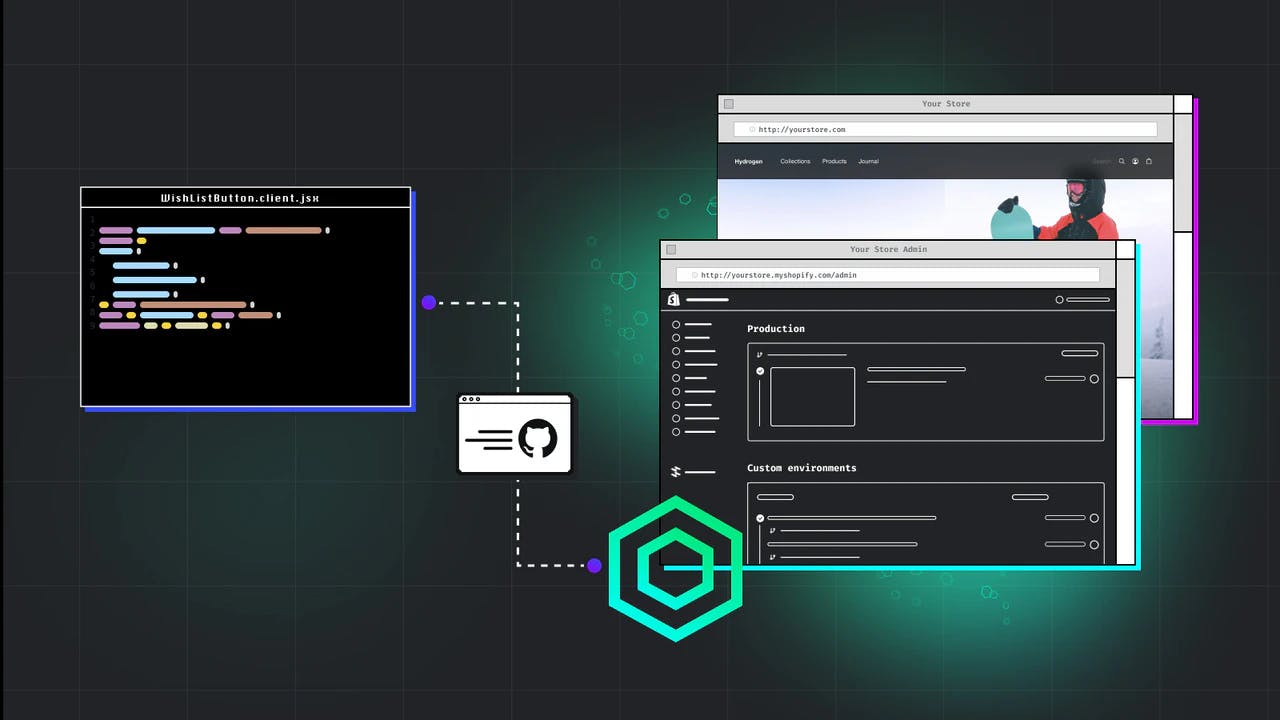Creating an online store: What a modern shop needs to be able to do today (and what not)
Published on by Tobias Fischer

Your current shop costs you time, nerves, and, in the worst case, sales—even though the traffic figures are good. But traffic alone is not enough: the decisive factor is whether your digital infrastructure is strong enough to turn visitors into customers and secure your competitive advantage in the future.
Traditional shops face a variety of problems: slow loading times, dependence on agencies, inflexible themes that cannot keep pace with your growth. All of this means that your online shop, and thus the flagship of your brand, will no longer be able to impress at the crucial moment. Making the wrong decisions here will lead to long-term problems and losing out to more agile competitors.
In this article, we provide an overview of the requirements that modern online stores must meet—and why traditional theme solutions no longer satisfy them. At the same time, you will receive clear recommendations on what a modern store should look like in 2025 in order to secure sales and make your brand independent. And, of course, we introduce Shopify Hydrogen, a solution that meets precisely these requirements.
Why manufacturers and brands need to rethink their online shops today
E-commerce standards in international comparison
In international markets, loading times of less than a second and conversion rates of over 3% have long been the norm. In Germany, many companies are lagging 1–2 years behind—often because old systems are being kept alive artificially. Anyone who wants to have an online shop created should therefore not measure themselves against the status quo, but against global competition.
Customer expectations are rising – from loading times to user experience
Whether B2B or B2C, customers today expect a smooth, intuitive customer journey. Long loading times, complicated checkouts, or confusing product information are direct conversion killers. A poor user experience not only costs revenue, but also damages the brand.
Competitors are upgrading their technology
Your competitors have long been investing in new shop technologies, headless architectures, and flexible systems. Those who hesitate too long will lose market share to those who are already setting standards today.
Customer and market expectations have changed rapidly. Anyone who wants to set up an online shop must take these developments into account.
Common issues before relaunching an online store
Before companies take the step of relaunching, they usually face the same hurdles. Their situation is often characterized by recurring problems that have built up over years.
Unstable technology and permanent construction sites
Many shops resemble a patchwork quilt. Plugins are added, workarounds are installed—until eventually every change causes new problems. Customers notice this immediately: loading times increase, functions break, trust declines.
Ask yourself honestly: Would you shop in your own store as a customer—or is the shopping experience at your competitors' stores perhaps better? (Micro-CTA)
Dependence on agencies
In many companies, even a minor adjustment takes several days because the internal team cannot intervene itself. Every change must be submitted to the agency via tickets. The result: downtime in day-to-day business and wasted time.
Declining SEO visibility and rising ad costs
If the technical basis is weak, rankings will suffer. Companies often have to compensate for the loss with expensive ads—but rising costs and falling conversion rates are not a sustainable solution.
Loss of control in the most important sales channel
A weak shop forces brands into dependence on retailers. They dictate margins and squeeze out the brand itself. An online shop should do exactly the opposite—and bring back control.
These are classic problems when creating an online shop.
Outdated themes and limited flexibility
Many agencies for online shops rely on standard themes. However, these solutions are often too inflexible for manufacturers with complex product portfolios: product data cannot be displayed in a differentiated manner, and individual customer requirements are not taken into account.
Data chaos and faulty migration
The biggest fear among decision-makers is that order histories and customer data will be lost, product feeds will not be transferred correctly, and tracking will no longer work.
High dependence on agencies and slow implementation
Those who rely on a system that only specialists can maintain lose agility. Every price change and every campaign results in expensive agency hours and long waiting times.
Myth: "A new design is enough to increase sales."
Many relaunch projects focus on appearance. But increases in sales come from performance, UX, scalability, and data integration—not from a pretty front end alone.
What a modern online store should offer today
Today, a shop is not a "project" but a system that continuously creates value. To remain competitive, it should:
- Flexibly adaptable to customer requirements e.g. through headless commerce technology.
- API interfaces optimized to work flexibly with other systems.
- Ensure flexible and rapid controllability within the company for campaigns, promotions, and content.
- Provide transparency so that the internal e-commerce team can act independently.
- Be future-proof, i.e., grow with the business instead of breaking down with every expansion.
The solution: Shopify Hydrogen as a competitive advantage
Headless commerce – flexibility and speed
Shopify offers its customers the opportunity to combine headless commerce with the proven advantages of Shopify. "Hydrogen" is Shopify's headless framework. It combines the stability of the proven platform with the freedom to design individual customer experiences. In headless commerce, the front end and back end work separately from each other, which offers you, as a shop owner, enormous advantages. Using Shopify Hydrogen means complete design freedom, lightning-fast loading times, and the ability to respond quickly to new (customer) requirements for you and your customers.
Why hydrogen is ideal for SMEs and manufacturers
- Increased efficiency: Your content and product management will become easier and more customer-oriented.
- Scaling: If you decide to expand internationally in the coming months or years, these markets can be quickly connected. Your shop will naturally be multilingual and can be expanded at any time.
- Competitive advantage: While other countries are once again leading the way in this area, only a few companies in Germany are currently using hydrogen – you are years ahead of your competitors.
Immediate increase in sales figures, cost reduction, and an optimized brand image
Our projects show that hydrogen can increase conversion rates by 30–150%, boost marketing efficiency, and digitally reposition brands—without permanently increasing agency costs.
Enterprise benefits without the enterprise price tag
Headless used to be expensive and only realistic for large corporations. Today, Hydrogen is comparable in price to a customized theme – but with significantly more future-proofing.
Learn more in the article: Shopify Hydrogen & Oxygen: The headless duo for powerful stores.
Practical example: Successful relaunch with Hydrogen
NOBLEX E-Optics GmbH faced the challenge that its Shopify store was no longer up to date, both technically and visually: long loading times, confusing product presentation, poor conversion rates.
Goal: A modern shop that clearly structures technical data, presents the brand in a high-quality manner, and generates measurably more sales.
Solution: Within 10 weeks, the relaunch took place with Shopify Hydrogen – including structured product data, new UX, and loading times of less than 1 second.
The result:
- Sales: +85%
- Organic ranking: +23%
- Marketing efficiency: +72%
Clear proof of how hydrogen gives manufacturers and brands a real competitive edge.
Fazit
Anyone who wants to create an online store today should not think in terms of design categories, but rather in terms of business categories: conversion, efficiency, scaling. A modern store must be faster, more flexible, and future-proof—and this is exactly where Shopify Hydrogen comes in.
While these standards have long been established internationally, Germany is still lagging behind. Take advantage of this opportunity to get 1–2 years ahead of your competition.
Let us check whether Shopify Hydrogen is also the ideal basis for your shop—and secure measurable competitive advantages with Shopify Hydrogen.
Related Posts


